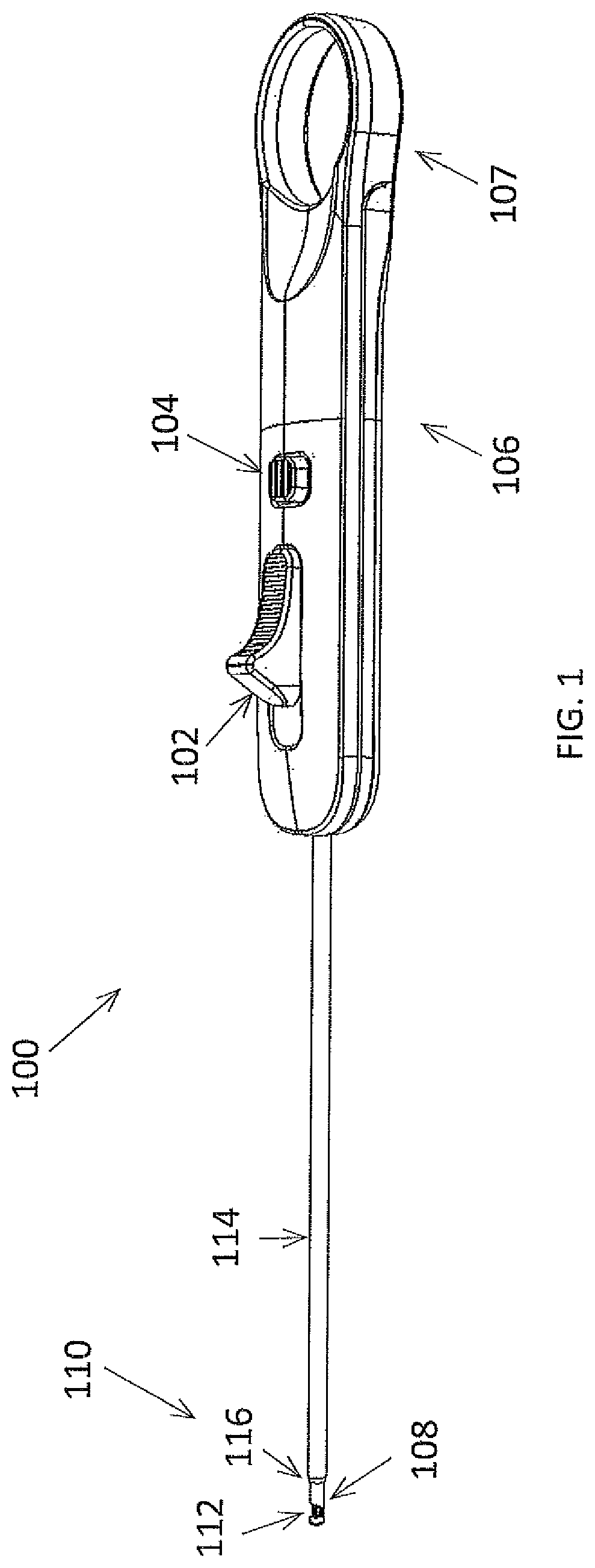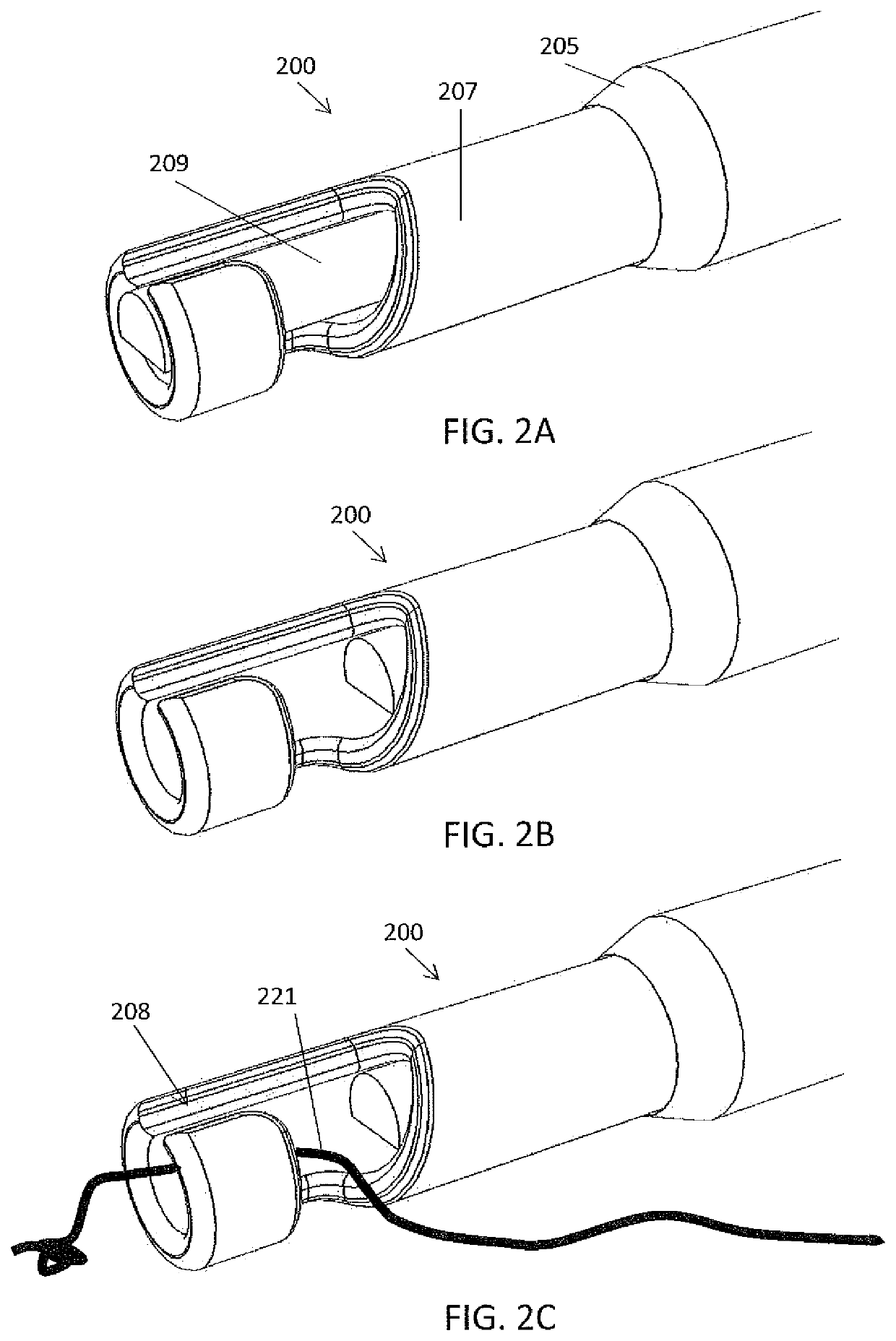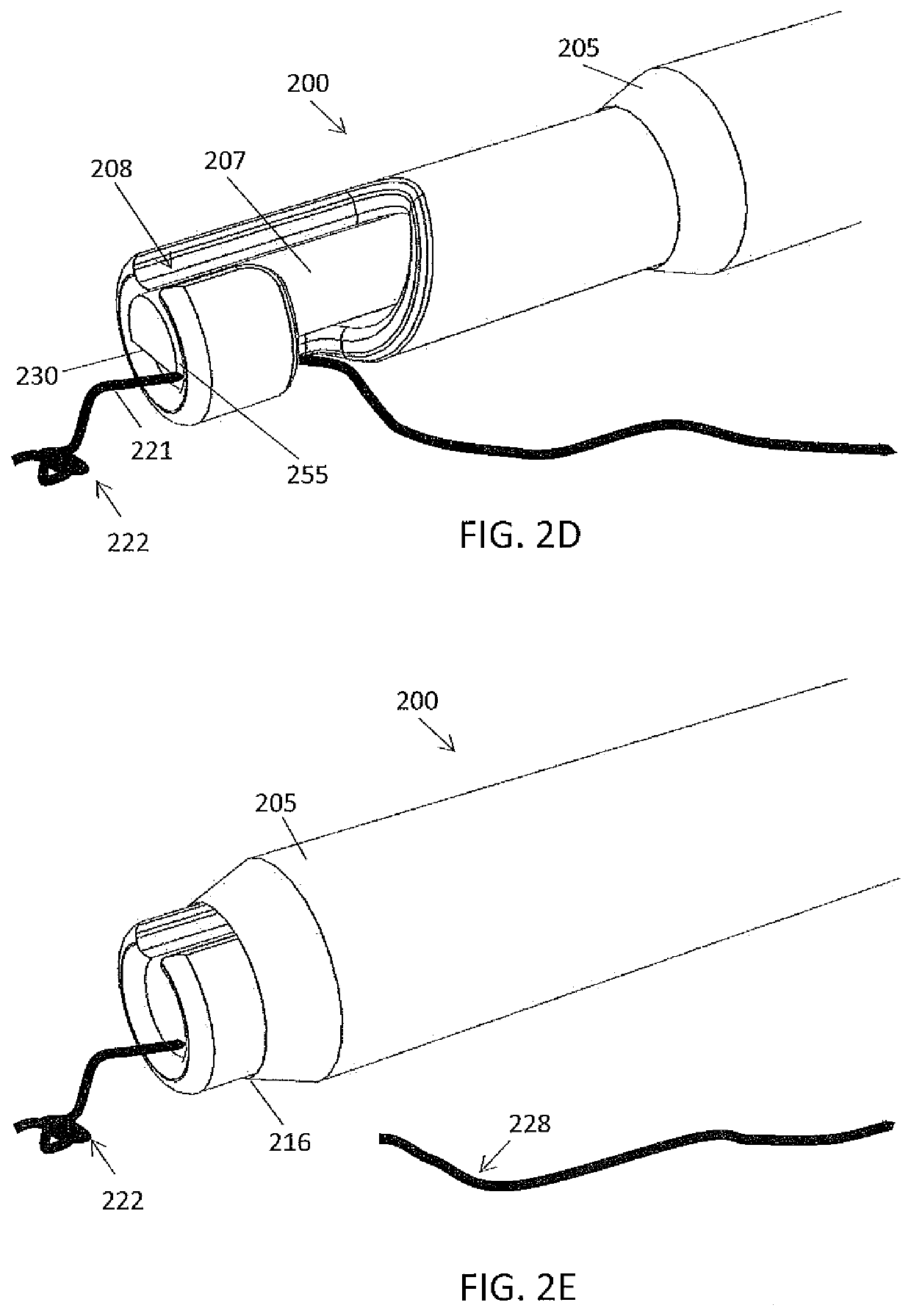Suture cutting devices
a technology of suture cutting and suture, which is applied in the field of suture cutting devices, can solve the problems of increasing recovery time, unsuitable access to tissue in this manner, and particularly challenging suture of tissue, and achieves the effect of low profile shap
- Summary
- Abstract
- Description
- Claims
- Application Information
AI Technical Summary
Benefits of technology
Problems solved by technology
Method used
Image
Examples
Embodiment Construction
[0037]Devices and methods described herein can be used to cut sutures in a patient during a medical procedure. The devices can be shaped and sized to access confined regions of the body, such as joint areas (e.g., knees, shoulders, etc.). The devices can include an elongate holding tube and a cutter that at least partially surrounds the holding tube and that is configured to cut the suture after suturing of a body tissue. The cutter can be configured to rotate with respect to the holding tube to cut the suture. Additionally or alternatively, the cutter can be configured to advance distally with respect to the holding tube to cut the suture. In some embodiments, the devices can additionally be used to push a pre-tied knot within the suture to cinch the knot in a desired location, such as a repair site. The devices can also include an inner mandrel within the holding tube, which cooperates with the holding tube to secure the suture during the cutting. In some cases, the inner mandrel ...
PUM
 Login to View More
Login to View More Abstract
Description
Claims
Application Information
 Login to View More
Login to View More - R&D
- Intellectual Property
- Life Sciences
- Materials
- Tech Scout
- Unparalleled Data Quality
- Higher Quality Content
- 60% Fewer Hallucinations
Browse by: Latest US Patents, China's latest patents, Technical Efficacy Thesaurus, Application Domain, Technology Topic, Popular Technical Reports.
© 2025 PatSnap. All rights reserved.Legal|Privacy policy|Modern Slavery Act Transparency Statement|Sitemap|About US| Contact US: help@patsnap.com



